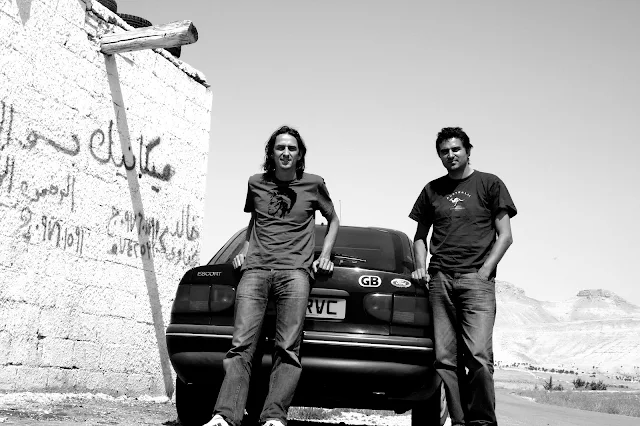5 Stories You Can Trust Are Real
They weren't raised in New York or Paris, Istanbul or Bangkok. They didn't go to Harvard or Oxford or Peking University. The hill behind their house in a small suburban market town in the East Midlands, UK, was their playground, and the council estate in the valley was their urban jungle. Why should any of this matter? Well, until about a year ago, it didn't mean very much at all. Then ChatGPT arrived and suddenly AI driven news articles started to flood the media, and lazy journalists began to use the machine to craft opinions without any heart at all. The mass producers of content won awards for the simple reason that their junk clickbait was being seen. Introducing a new counter culture, where books written blind (without the help of technology), are the only sure way you can guarantee that what you are reading is real, that it was produced by a human and is not random plagiarized thought.
When The Raven Brothers wrote their first book in 2005 it was an absolute disaster. The first edition was rammed with spelling mistakes and was grammatically rough. The brothers had quit their jobs in London and after a chaotic few years of travel, they found themselves back at their parents house in their hometown without internet and with only one computer between them. Smartphones didn't exist. Six months later, the brothers published their first book. It was bound with wire and had no cover. It was raw, but it was real. It had anger and pain plastered all over it.
The brothers drove across Siberia the following year, from the UK to Vladivostok, in a beat up car that they used to transport them to work in a massive freezer packing warehouse. They returned broken from the journey and wrote their second book ‘Driving the Trans-Siberian’, which was heavily criticised for its roughness, but which won them some media attention. Next the duo fled to South America and travelled a new route across the Amazon and went in search of the real carnival. The book ‘Carnival Express’ failed to catch the imagination of publishers during a period when very few people were exploring the dangerous frontiers of Peru, Bolivia and Brazil. Returning to the freezer, the brothers fought on and began photographing new and off the beaten track destinations. In the beginning they shared a camera and often couldn't afford to develop the film. Photographs of India, South China and the people of the high Andes sat stagnant for many years as the brothers pushed on in search of adventure. Two more books appeared ‘Hike, Drive, Stayin’ Alive!’, a collection of 10 short stories (Norway, Damascus, Sicily, Berlin, Nagaland), and a hard hitting book of travel history ‘Black Sea Circuit’, following a drive full circle around an inland sea that links Ukraine, Russia, Georgia and Turkey.
The brothers' personal struggle to survive as writers reads like a novel. It is refreshing to hear after years of endless social media clips promising instant success, quick riches and glory for little effort. Could it be that the truth of an artist or writer's lifestyle, lies between the pages of a book from the recent past?
The Raven Brothers exhibition of photography, NO RUSH, toured India this year for the first time. 50 prints taken over 20 years. The entire exhibition was self-funded and not for profit. Showing no apparent signs of slowing down, the Raven duo's sixth book on Mexico is due out next year, with the promise of a series of radio plays coming soon.
When asked what he thought about AI, Simon Raven replied, “If you want to take a true look at yourself, it helps to face the empty page."
Discover 5 books by The Raven Brothers:
Amazon here >
Barnes & Noble here >
Note to the reader:
E.T.G would love to hear about other adventure writers and photographers you may have stumbled across, and share stories of their books, exhibitions and work. Please get in touch via one of our social networks:


